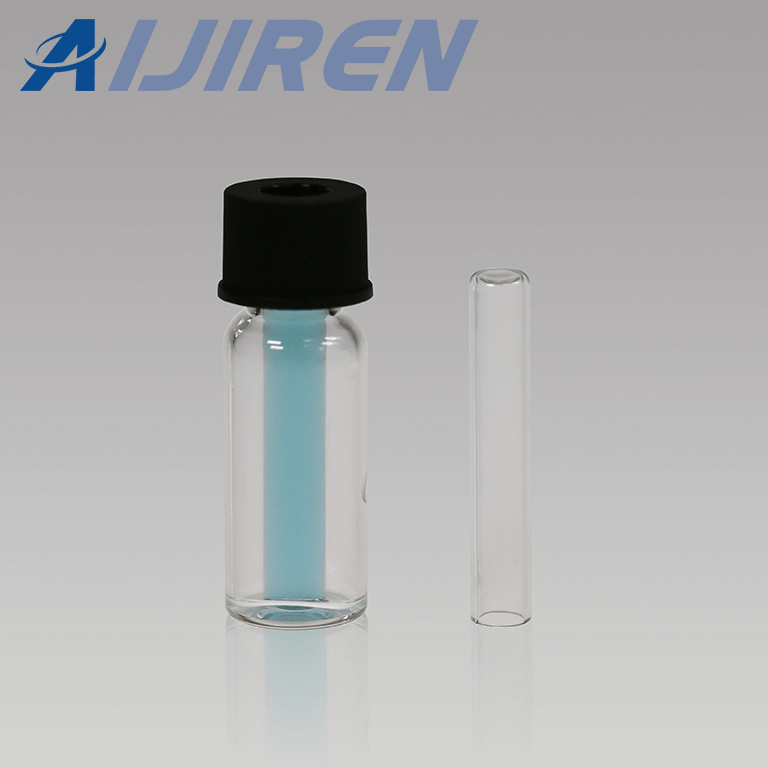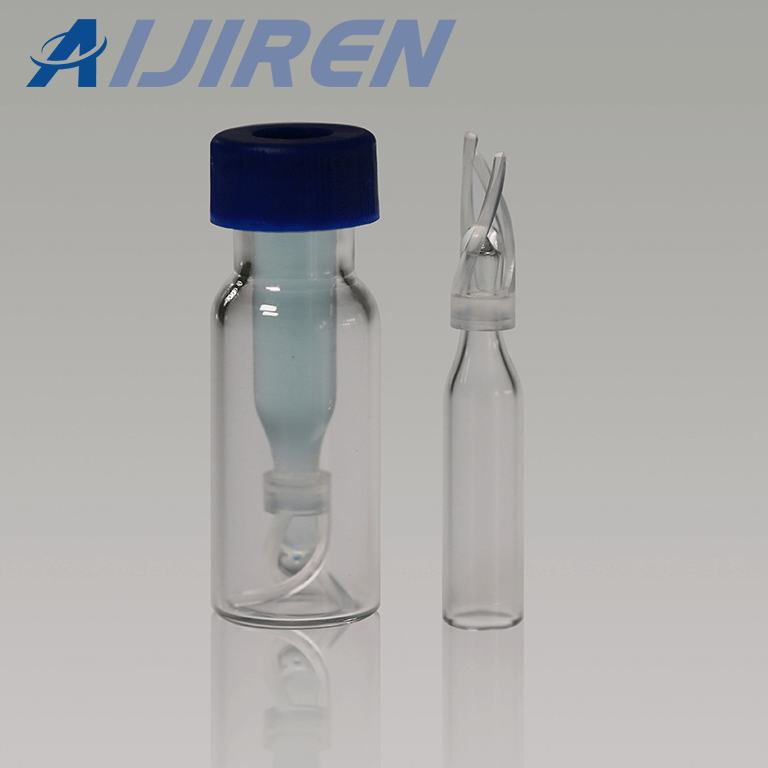INSERTS FOR SALE: Expert Tips for Choosing the Right HPLC Vial Inserts for Your Lab
I.Introduction
HPLC vials with inserts are essential tools in high-performance liquid chromatography (HPLC) analysis. HPLC vials are specially designed to hold samples and solvents necessary for HPLC analysis, while their insert serves as a platform to introduce these samples to an HPLC system. The selection of an appropriate vial insert for HPLC analysis is key to achieving accurate and reliable results. An optimal vial should ensure proper sample containment, reduce sample loss and prevent contamination of samples. Selecting the appropriate vial insert can reduce the risk of ghost peaks, lower the likelihood of column damage, and optimize the sensitivity and reproducibility of HPLC analysis. We will discuss in this article why selecting an optimal vial insert for HPLC analysis matters and its effect on the performance of the analysis. Choosing the Right HPLC Vial Inserts Tips is Select an Appropriate HPLC Vial Insert
II. HPLC Vials With Inserts
HPLC vials with inserts are essential tools in High-Performance Liquid Chromatography (HPLC) analysis, serving to securely house samples to be analyzed without taking risks of contamination or loss of content during processing. They come with specially-made inserts designed to protect them against accidental leakage during analysis.
HPLC vials with inserts can be defined in several ways: small cylindrical containers made of glass or plastic that serve to store samples that require analysis using HPLC analysis. An insert, which acts like a smaller vial within its larger counterpart, holds these samples more securely while simultaneously decreasing the volume available within the vial – something which helps ensure more precise results with HPLC analyses.
HPLC vials with inserts serve to ensure that samples being analyzed remain free from contamination and loss, and decrease their exposure to air – helping decrease sample degradation risks while making an injection into HPLC columns more seamless – for accurate and precise analyses.
1. How many types of HPLC Vial Inserts are there?
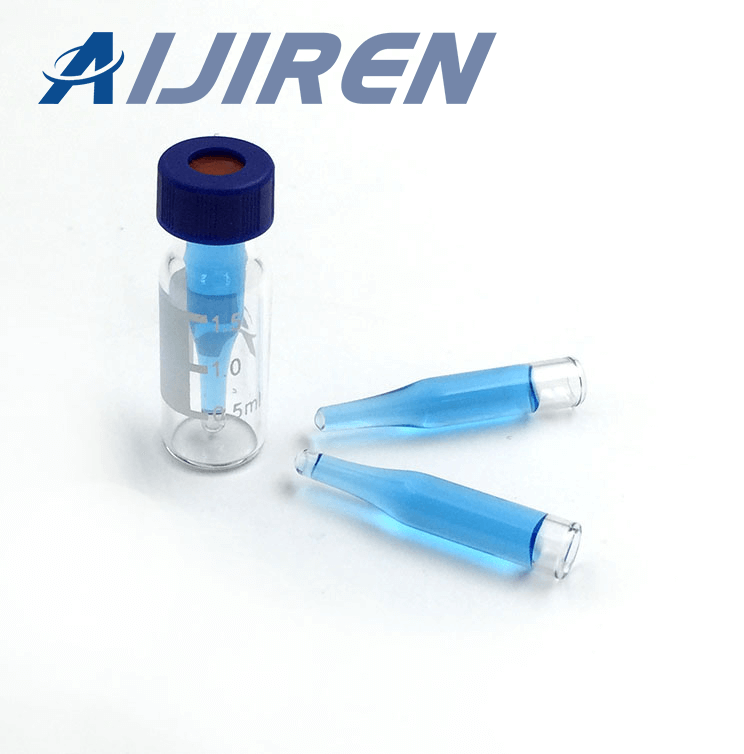
There are three types of inserts available for HPLC vials, including conical, flat-bottomed, and tapered styles. Conical and tapered inserts are designed to fit snugly inside vials while flat-bottomed ones sit at the bottom; which one you use depends on both your sample type and HPLC column type.
2. Three Advantages of Choosing HPLC Vials with Inserts
HPLC vials with inserts offer numerous advantages over using standard HPLC vials alone. First and foremost, they help ensure the accuracy and precision of HPLC analysis by reducing risks of sample loss or contamination; they can also help minimize sample consumption when working with limited or precious samples; finally, they may reduce sample degradation risks when dealing with unstable or reactive samples.
HPLC vials with inserts are an integral component of HPLC analysis, helping ensure accurate and precise results by minimizing sample contamination or loss. There are various types of inserts available to choose from to best match the type of sample being analyzed and the type of HPLC column being utilized. By following best practices when handling, cleaning, and assembling HPLC vials with inserts researchers can achieve optimal results and advance scientific understanding.
III. Low Volume HPLC vials
High-Performance Liquid Chromatography (HPLC) is an increasingly used analytical technique in various fields such as pharmaceuticals, environmental analysis, and biochemistry. HPLC vials play an essential part in this analysis process; low-volume HPLC vials provide even more volume for analysis with their smaller volume capacity than standard vials. We will explore here the advantages of low-volume HPLC vials; their various types available as well as some factors to keep in mind when selecting them.
1. Two Advantages of Low Volume HPLC Vials
Low-volume HPLC vials provide many advantages over standard vials for analysis. First and foremost, they reduce the sample requirements necessary for analysis – this can be especially advantageous when dealing with rare or expensive samples. Furthermore, using low-volume vials helps increase analysis sensitivity by minimizing dilution effects – your analyte is concentrated into smaller volumes increasing concentration and sensitivity as a result of using less solvent resulting in cost savings as well as reduced waste production.
2. Three Types of Low Volume HPLC Vials Available
Low-volume HPLC vials come in various varieties, including micro-insert vials, limited-volume vials, and micro-ampule vials. Micro-insert vials feature a small insert that fits inside to reduce volume while limited volume vials have smaller capacities than standard vials – typically from 0.1ml to 1.5 ml – while micro-ampule vials contain pre-measured amounts of sample and are often used for calibration.
3. What to Consider When Selecting Low-Volume HPLC Vials
When selecting low-volume HPLC vials, several factors need to be taken into account. Glass is a popular material used for HPLC vials due to its inertness and transparency; plastic vials may not be as inert as glass; the volume capacity must match up with that of your sample being analyzed for analysis, while compatibility must exist between your instrument of analysis and your vial for seamless usage.
Low-volume HPLC vials are an integral component of HPLC analysis. Their advantages over standard vials include minimizing sample requirements, increasing sensitivity, and decreasing solvent usage, and waste production. There are various kinds of low-volume vials available including micro-insert vials, limited-volume vials, and micro-ampule vials; when selecting them it is essential to take into account material, volume capacity, and compatibility with instruments being used so you can achieve accurate and reliable results in HPLC analysis.
IV.How to Utilize HPLC Vial Inserts
HPLC vial inserts are small devices used to enhance the functionality of HPLC vials and maximize their benefits, such as minimizing sample loss and contamination. To be effective at this, it’s vital that users know how to utilize them appropriately – this essay offers a step-by-step guide and offers tips and best practices for their usage.
1. Step-by-Step Guide to Utilizing HPLC Vial Inserts
1). Select an Appropriate HPLC Vial Insert: Proper HPLC vial inserts will benefit accurate and reliable results. However, low-quality vial inserts will hinder the analysis process.
2). Before inserting an HPLC vial insert into an HPLC vial, ensure both are clean. Rinse with the appropriate solvent and dry them thoroughly to avoid potential contamination issues.
3). Insert HPLC Vial Insert: When holding the vial with steady downward pressure, carefully insert its insert. If the vial and the inserts are together, then you can skip to the next step.
4). Add Your Sample: After inserting an HPLC vial insert, proceed with adding your sample. Use a syringe to inject it directly into the insert ensuring it does not come into contact with its outer walls or come into direct contact.
5). Analyse Your Sample: Once you’ve added your sample, cap off the vial and place it into an autosampler for analysis. Your sample is now ready for evaluation!
2. Four Tips and Best Practices for Utilizing HPLC Vial Inserts
1). Select an Appropriate HPLC Vial Insert: As previously discussed, there are various types of HPLC vial inserts available for selection based on analysis requirements and sample type. Select an insert according to these factors for optimal results.
2). Select Inserts With Deactivated Surfaces: To reduce analyte loss due to adsorption, utilize inserts with deactivated surfaces as this minimizes interactions between analytes and inserts’ surfaces.
3). Reduce sample exposure to air: Exposure to air can lead to degradation or contamination of samples, so to minimize exposure use inserts with minimal headspace.
4). Utilize inserts with tapered bottoms: Utilizing inserts with tapered bottoms can significantly decrease the dead volume in an insert, improving its accuracy and precision for analysis purposes.
V. 4 Benefits of HPLC Vial Inserts
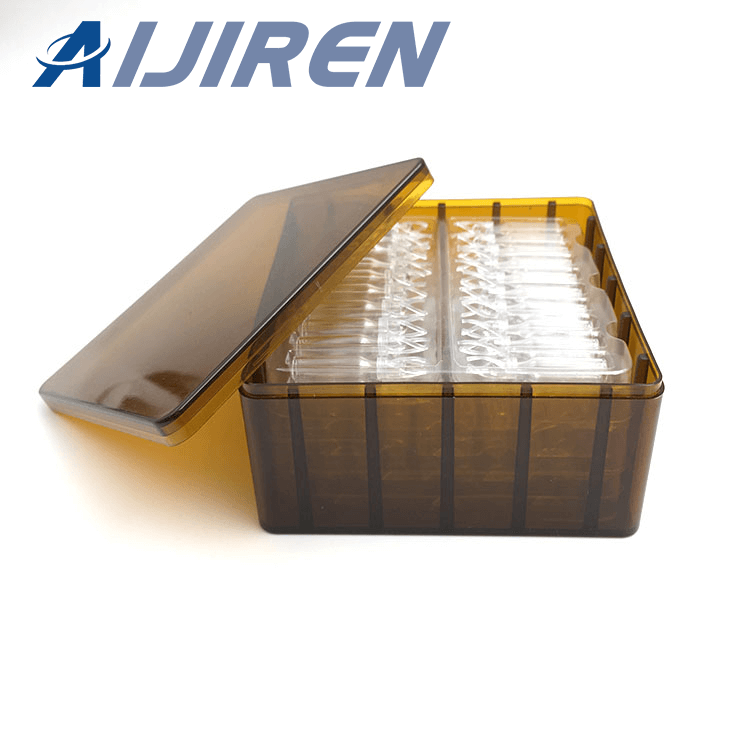
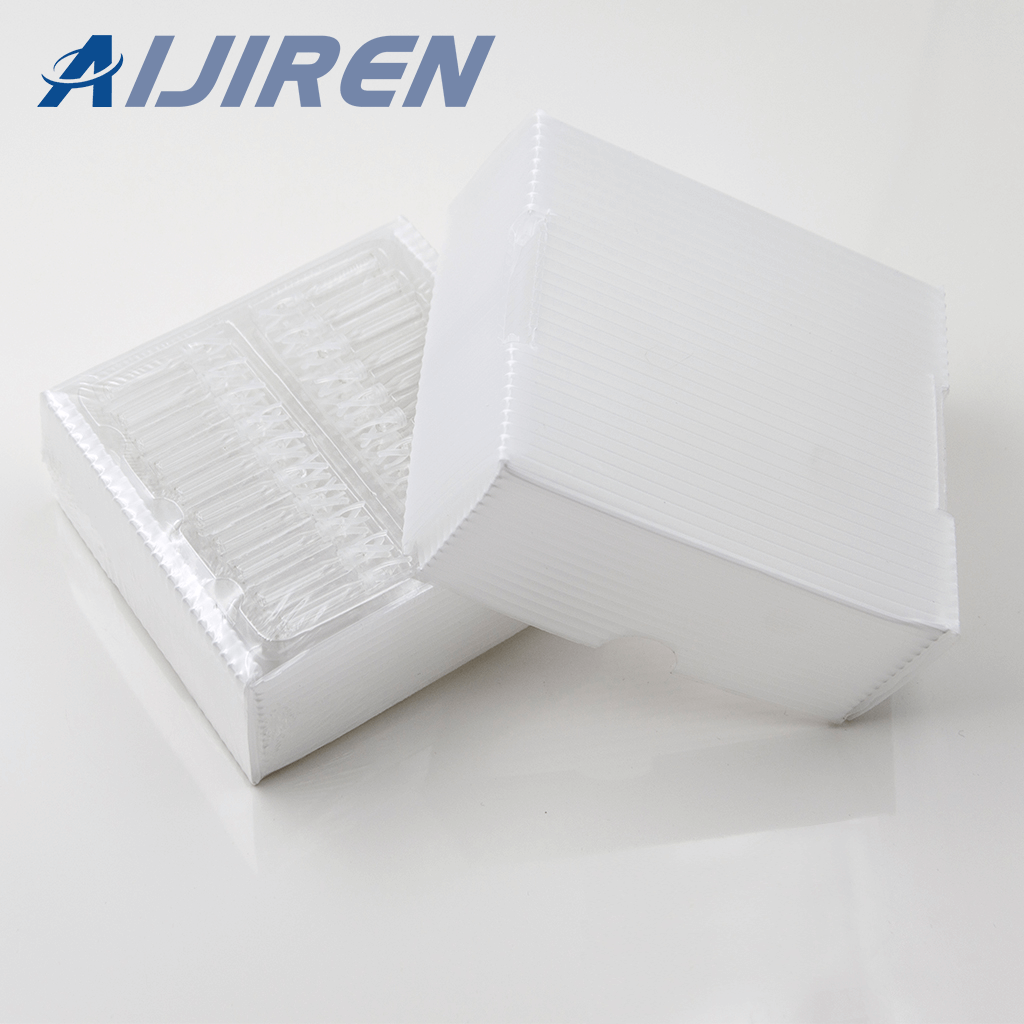
The benefits of HPLC vial inserts are improved sample recovery, decreased sample evaporation rates, reduction of dead volume minimization as well as enhanced reproducibility and accuracy.
- Firstly, HPLC vial inserts can significantly enhance sample recovery. Sample recovery measures the amount of material actually injected into an HPLC column relative to what was originally added into a vial. Traditional HPLC vials often feature large dead volumes which prevent the sample from reaching its destination; HPLC vial inserts have smaller dead volumes which facilitate more efficient transfer from vial to column and ultimately increase sample recovery and allow more precise analysis.
- Secondly, HPLC vial inserts can reduce sample evaporation. Traditional HPLC vials expose samples to air that causes solvent evaporation and concentration changes, leading to inaccurate results and unreliable data. These inserts seal off samples so as to keep out air and reduce sample evaporation while helping maintain sample integrity.
- Thirdly, HPLC vial inserts can reduce dead volume. Dead volume refers to any space within an HPLC system that remains empty after filling it with mobile phase and sample; its presence can result in poor peak shape, resolution issues, and inaccurate retention times. Vial inserts help minimize dead volume by decreasing space between samples and columns allowing faster transference and improving accuracy and reproducibility in analyses.
- HPLC vial inserts can also enhance reproducibility and accuracy. Reproducibility refers to the ability of different analysts or instruments to produce consistent results from a method, while accuracy measures how closely measurements approach their true values. HPLC vial inserts can help increase reproducibility and accuracy by reducing sample loss, sample evaporation, and dead volume; this leads to more consistent and accurate analyses, particularly important in fields like pharmaceuticals where even minor variations in the analysis may have serious ramifications.
HPLC vial inserts provide numerous advantages over traditional vials in terms of sample recovery, reduced sample evaporation, minimize dead volume reduction, and enhanced reproducibility and accuracy – qualities which make them invaluable tools for anyone working in pharmaceutical, environmental, and food analysis fields.
VI. Five Factors to Keep in Mind When Selecting HPLC Vial Inserts
Vial inserts play an integral role in High-Performance Liquid Chromatography (HPLC), helping ensure its accuracy and precision. By decreasing the surface area in vials and decreasing contact between the sample and walls of vials resulting in less absorption and inaccurate results, vial inserts help minimize this adsorption, as well as making for smoother tests overall. Selecting an ideal HPLC vial insert can be a daunting task, however, there are key considerations when making this selection process easier:
- The initial factor to take into account when selecting an insert vial size is sample volume. Choosing an appropriate vial insert should accommodate the volume of your sample – selecting too large may cause it to spread and make aspiration more challenging, while too small may not hold all of it resulting in an incomplete analysis. It is crucial that an insert with adequate capacity provides accurate results that are reliable and precise.
- Sample Compatibility When selecting an HPLC vial insert, sample compatibility should also be taken into consideration. It is crucial that any material used for its production be compatible with your sample to prevent potential interactions that could interfere with the analysis. For instance, acidic samples require inserts made of materials resistant to acids; viscous or particulate matter-containing solutions require frit-filtered inserts that filter out impurities.
- Choosing an HPLC vial insert requires considering its compatibility with its host vial. Specifically, its insert should fit securely inside to prevent leaks or contamination and its matching of materials should coincide with both sample analysis methods and analytic processes. It’s essential that compatibility be verified.
- The material of an insert is another key consideration for HPLC vial inserts. There are mainly two commonly used materials: glass and polypropylene. Because both offer unreactive inert properties, which makes them suitable for most experiments. Polypropylene inserts may offer superior impact resistance. And they should be considered especially with samples that may cause corrosion damage.
- The shape and size of an insert should also be taken into account, as these come in various shapes such as conical, flat-bottomed, and tapered shapes. To ensure accurate analysis and proper sample containment.
Selecting an HPLC vial insert that matches your specific analysis is paramount to achieving accurate and precise results. When making your selection, be mindful of factors like sample volume, sample compatibility with vials and materials used as well as size/shape/function requirements – doing so will enable you to choose an insert best suited to your application resulting in reliable and precise outcomes.
VII. What Aijiren Offers
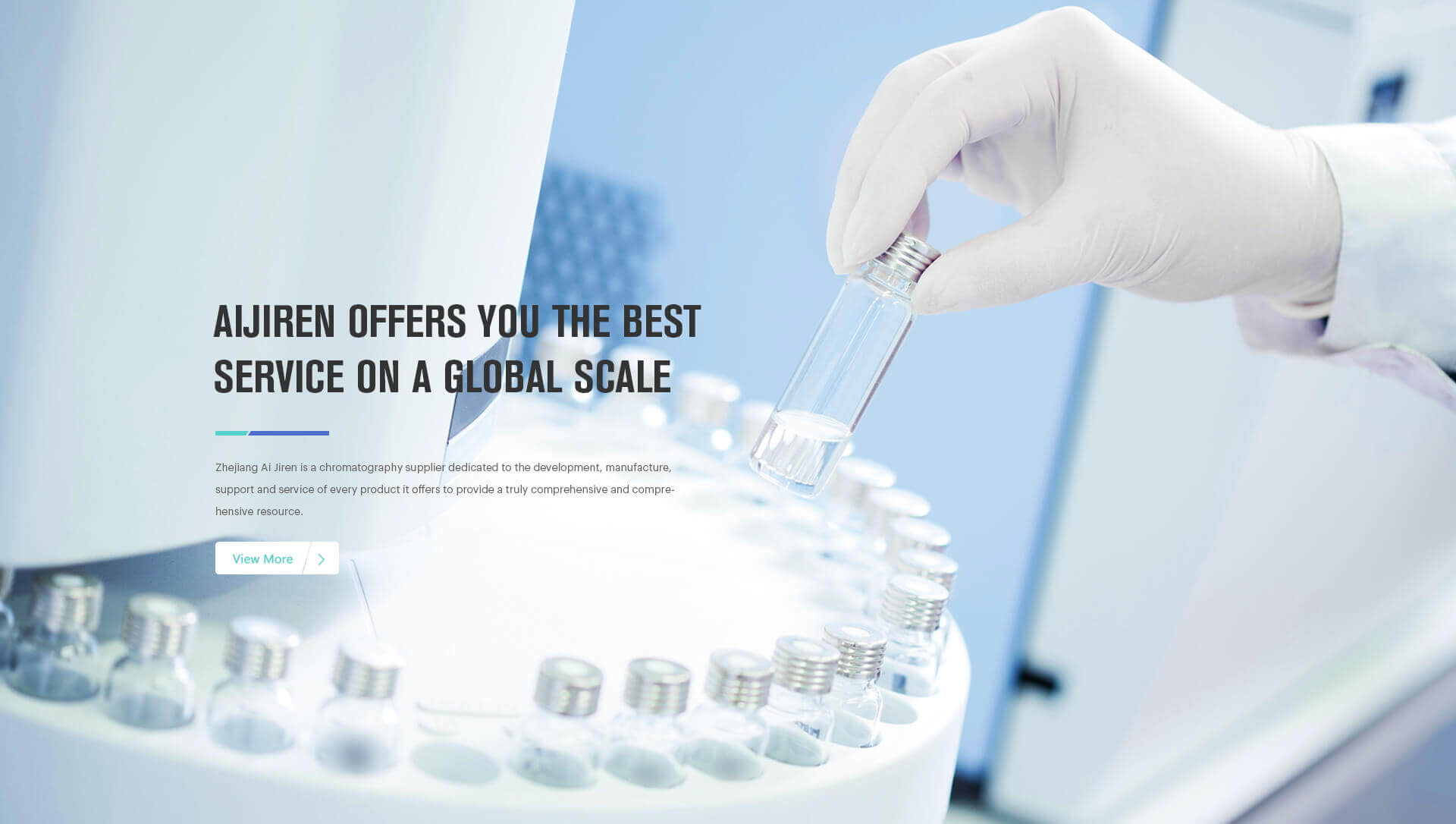
Aijiren, an industry-leading manufacturer and supplier of laboratory consumables, offers a wide range of selection of HPLC vials with inserts. Renowned for quality and innovation, Aijiren has earned the trust of laboratory professionals as an essential partner to help meet their analytical needs.
1. Aijiren Offers a Selection of HPLC Vials with Inserts.
Aijiren’s HPLC vials with inserts are one of the hallmark products offered by Aijiren, engineered to deliver reliable performance for various analytical applications. Available in clear glass and amber glass as well as plastic materials with inserts manufactured to the highest standards, these vials meet Aijiren’s quality requirements for reliability and consistency.
2. Advantages of Selecting Aijiren HPLC Vials with Inserts
One of the many advantages of selecting Aijiren for HPLC vials with inserts is their wide variety of available options. Aijiren provides vials with tapered and flat bottom inserts, along with those featuring different volumes and shapes to meet any laboratory professional’s individual requirements, guaranteeing accurate, reliable results every time.
Aijiren stands apart from its competitors by providing not only an extensive range of options but also superior quality and reliability in every product they manufacture for HPLC vials with inserts – they adhere to industry standards of accuracy and consistency in terms of their manufacturing quality. Customers have taken notice, offering testimonials praising Aijiren’s reliable products as well as outstanding customer service – proof enough of Aijiren’s dedication.
3. Testimonials from satisfied customers
One customer, a research scientist from a major pharmaceutical company, commended Aijiren for their high-quality vials that consistently deliver reliable results. Another, a lab manager at an elite university noted their comprehensive selection and exceptional customer service as being top pick for all their analytical needs.
Aijiren is a premier manufacturer and supplier of HPLC vials with inserts, offering an array of options while upholding quality and reliability standards. Their satisfied customer testimonials vouch for this, giving lab professionals access to tools they need for accurate, reliable results in any laboratory setting – pharmaceutical lab, university research facility, or any other. Aijiren HPLC vials with inserts are an efficient, dependable solution to satisfy their analytical needs.
VIII. What is the Price of HPLC Inserts
The price of High-performance liquid chromatography (HPLC) inserts is different in terms of different types of inserts. High-performance liquid chromatography (HPLC) inserts consist of small devices inserted into an HPLC vial to facilitate the transferral of liquid samples between it and its instrument, with prices depending on multiple factors; in this essay, we will explore those influences, compare prices from different manufacturers, and provide tips for choosing economical HPLC inserts without compromising on quality.
3 Price considerations when purchasing HPLC inserts depend on a variety of factors.
- One such factor is the material used in their construction – HPLC inserts can be constructed from glass, polypropylene, or other materials. Glass inserts tend to be more costly than polypropylene inserts due to their superior quality and durability, although there may also be differences depending on which type of insert is chosen for HPLC use. Example inserts may be tailored specifically for use with limited sample volumes, while others can accommodate large sample volumes. Your exact needs and analysis will dictate which insert is necessary. Furthermore, the manufacturing process plays a role; those manufactured via more complicated processes typically cost more.
- Secondly, there are various manufacturers of HPLC inserts whose prices can differ significantly, so it is crucial to compare the prices of products from various makers in order to find the most cost-effective deal. Some renowned companies offering HPLC inserts include Aijiren Technologies, Thermo Fisher Scientific, and Waters; each offers various insert options at differing costs while it’s important to consider quality and durability before making your selection.
- Last, there are some helpful guidelines that can be followed to select affordable HPLC inserts without compromising on quality. First, it is crucial to establish specific needs based on the application and analysis being conducted; this will help identify an insert type and size suitable for cost-cutting. Secondly, compare prices from various suppliers of HPLC inserts before selecting one with quality products at reasonable costs; bulk purchasing HPLC inserts is an additional way of saving money and cutting costs.
In summary, HPLC insert prices can depend upon several factors including material, type, and manufacturing process. When searching for affordable HPLC inserts from different manufacturers it is essential to compare their prices so as to select an affordable alternative without compromising quality. By following the tips outlined above it should be possible to select appropriate HPLC inserts that satisfy specific requirements at an acceptable price point.
IX.Conclusion
Selecting an HPLC vial insert that meets all your analysis needs is paramount for accurate and meaningful HPLC analyses. Quality HPLC vials with inserts provide numerous advantages such as improving sample recovery rate, decreasing sample evaporation rates, and preventing contamination – so investing in these quality items will only further ensure accurate results and meaningful analysis results.
Back to List
-
 下午4:09Weighing the Pros and Cons of PTFE/Silicone Septa
下午4:09Weighing the Pros and Cons of PTFE/Silicone Septa -
 下午4:05Decoding Vial Discard Guidelines: Ensuring Precision in Chromatography
下午4:05Decoding Vial Discard Guidelines: Ensuring Precision in Chromatography -
 下午5:01Navigating Micro Inserts for HPLC Vials: A Comprehensive Guide
下午5:01Navigating Micro Inserts for HPLC Vials: A Comprehensive Guide -
.jpg) 下午2:02Common faults and solutions of automatic samplers(2)
下午2:02Common faults and solutions of automatic samplers(2) -
 下午5:08Ensuring Sample Integrity: Navigating EPA Storage Vials Stability Guidelines
下午5:08Ensuring Sample Integrity: Navigating EPA Storage Vials Stability Guidelines

